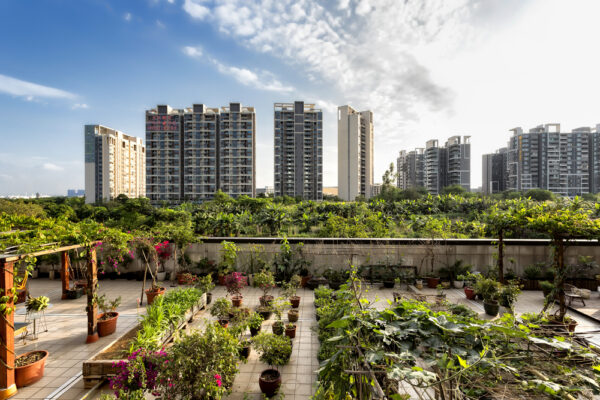Black St. Louisans are exposed to considerably greater environmental risks than white residents, contributing to stark racial disparities regarding health, economic burdens and quality of life, finds a new report prepared by the School of Law’s Interdisciplinary Environmental Clinic (IEC) at Washington University in St. Louis.
“Environmental racism refers to the fact that environmental hazards, such as those referenced in the report, disproportionately affect people of color,” said Tara Rocque, assistant director of the clinic.
 “In short, the implications are decreased health, increased poverty and decreased quality of life,” Rocque said.
“In short, the implications are decreased health, increased poverty and decreased quality of life,” Rocque said.
The report, “Environmental Racism in St. Louis,” was prepared on behalf of the Sierra Club, Action St. Louis, Arch City Defenders and Dutchtown South Community Corporation.
The report was prepared by IEC students Sean McManus and Onnolee Wierson, both third year law students; Noah Rennert, a senior majoring in chemical engineering in the McKelvey School of Engineering; and Sophie Watterson, a senior majoring in environmental policy in Arts & Sciences, all of whom were enrolled in the clinic last spring semester. The students collaborated with the clients and community members to take a hard look at environmental disparities in St. Louis.
Among the report’s findings include:
- Black children in the City of St. Louis are 2.4 times more likely than white children to test positive for lead in their blood and account for more than 70% of children suffering from lead poisoning.
- Black children in St. Louis make roughly 10 times more emergency room visits for asthma each year than white children. Black children make more than 42 emergency room visits per 1,000 children, compared to less than 4 visits per 1,000 children for their white counterparts.
- Mold complaints are more common in majority-black areas than elsewhere in the city.
- Most of the city’s air pollution sources are located in neighborhoods of color, and more building demolitions — which create harmful dust that may contain asbestos and lead — occur in majority-black neighborhoods.
- Black households in St. Louis are disproportionately affected by energy burdens (the percentage of income spent on utilities), far exceeding the citywide median.
- Black residents of St. Louis are almost twice as likely to have limited access to healthy food as white residents because supermarkets in close proximity are so rare, and they are more likely to have limited access to a vehicle or adequate public transit to reach more distant grocery stores.
- Majority-black neighborhoods experience most of the city’s illegal trash dumping.
- More than 90% of the city’s exceptionally large inventory of vacant properties are located in majority-black neighborhoods.
“These problems are interrelated, in that they cause each other and exacerbate each other, negatively impacting the most basic and vital aspects of a person’s life,” said Leah Clyburn, an organizer with the Sierra Club’s Beyond Coal Campaign.
Poorly maintained rental housing frequently subjects tenants to increased risks of exposure to lead and mold, as well as high utility bills. Neighborhoods containing many vacant properties are targeted by those seeking to illegally dump construction debris and other trash. Fixing these deeply-rooted problems will require solutions that explicitly seek to eliminate environmental racism and achieve racial justice, the report finds.
“The environmental racism that exists in St. Louis is the result of decades of intentional policy choices aimed at creating and compounding the disparities that we see along lines of race and class; it will require a different set of policies to reverse those outcomes,” said Blake Strode, executive director of Arch City Defenders.
“Mold, lead, and air pollution negatively impact health, and can cause or exacerbate asthma and other diseases,” said Ken Miller, lecturer in law and an environmental scientist with the IEC.
“The resultant decrease in health leads to increased medical costs and lost productivity, which can in turn cause increased debt and financial instability,” Miller said. “Older structures like those in St. Louis’ lower-income, majority-black neighborhoods — whether they be ill-kept rental stock or otherwise — are more likely to have mold in the walls, as well as lead in the paint and pipes, and poor energy efficiency.
“Lead poisoning in children can cause health problems, including reduced IQ and increased aggression. Poor energy efficiency causes increased heating and cooling costs, often for the people who are least able to pay,” he said.
“Majority-black neighborhoods in the city, especially those with significant levels of vacancy, often have insufficient access to healthy food,” Rocque said.
“This causes further health problems, including obesity and diabetes, again increasing medical costs and decreasing productivity. Moreover, the need to rely on higher-cost corner stores increases food costs for those who, again, can least afford it,” she said.
“Illegal dumping and vacancy reduce neighborhood pride and property values. Vacancy encourages illegal dumping, which makes neighborhoods worse places to live, which then circles back to increase vacancy rates,” Rocque said. “These issues also worsen health, whether it be from exposure to the vermin attracted to improperly disposed waste, the chemicals and materials within the waste, or the air pollution kicked up by demolitions.”
The report calls for all St. Louisans to have access to safe, affordable housing; clean air; reliable and affordable public transportation; healthy, accessible food; and neighborhood-based revitalization efforts.
Established in 2000, the IEC pursues a dual mission of providing students with experiential learning opportunities and serving the community’s environmental needs.


